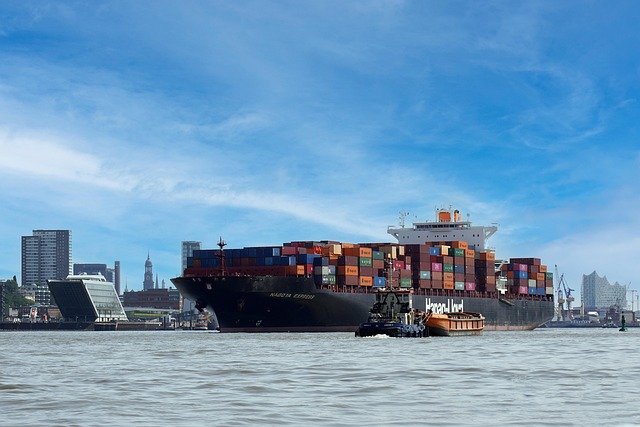Conex box dimensions (20-40 feet) align with ISO standards, optimizing space and cost in construction & storage. Size selection impacts accommodation vs. efficiency, cost, and item types. Key factors include weight capacity, access, and strategic stacking for maximum capacity. Global dealers offer new/used options catering to diverse needs, from standard shipping to living quarters.
Planning your logistics and layout can be seamless with a comprehensive understanding of Conex box sizing. This guide deciphers the standard dimensions, offering practical insights for efficient storage. Learn how choosing the right Conex box size optimizes space, considering stacking and layout tips. We also explore factors influencing capacity and provide a detailed breakdown of common sizes, ensuring you make informed decisions for your needs.
- Understanding Conex Box Dimensions
- Choosing the Right Size for Efficient Storage
- Factors Influencing Conex Box Capacity
- Optimizing Space: Stacking and Layout Tips
- Common Sizes: A Practical Guide for Planning
Understanding Conex Box Dimensions

When it comes to planning logistics and layout, especially in construction sites or storage facilities, understanding conex box dimensions is paramount. Conex boxes, also known as shipping containers, are standardized for size and functionality, making them versatile tools for various purposes. These metal containers come in different shapes and sizes, each designed to accommodate specific needs. The standard sizing guide typically includes length options ranging from 20 feet to 40 feet, with width and height dimensions that align with the ISO (International Organization for Standardization) specifications.
Knowing these conex box dimensions is crucial for efficient space utilization and cost-effective shipping. For instance, a 20-foot container provides compact storage or transport options, while a 40-foot unit offers ample space for larger projects. Moreover, understanding the internal dimensions ensures that items fit securely within the boxes, preventing damage during transit or storage. Whether you’re looking to buy a new conex box, rent one for temporary use, or explore used options, being aware of these dimensions will facilitate informed decisions. Accessory modifications and conversions can further tailor these containers to specific tasks, making them a popular choice in various industries.
Choosing the Right Size for Efficient Storage

When planning logistics and layout, selecting the right-sized Conex box is paramount to efficient storage and organization. These versatile containers come in various dimensions, each serving a specific purpose. The key is choosing one that accommodates your goods without unnecessary space wastage or, conversely, leaves you with inadequate room. Consider factors like the types of items you’ll store, their volumes, and how they’ll be moved—whether by crane, forklift, or hand truck.
Size selection also influences cost-effectiveness. Larger boxes may offer savings per unit volume, but if not completely filled, they can lead to inefficient utilization. Conversely, smaller boxes are ideal for specialized, odd-shaped items, ensuring dense packing and minimal voids. Explore Conex box dealers or suppliers who provide detailed dimensions, pricing guides, and even used or new box sales/rentals to find the perfect fit tailored to your needs, whether you require a standard container for storage or a modified, converted box for specific worksite requirements.
Factors Influencing Conex Box Capacity

When planning logistics and layout using Conex boxes—also known as shipping containers—several factors influence their capacity and functionality. Firstly, consider conex box dimensions: standard sizes range from 20 to 40 feet in length, with widths typically around 8 feet and heights varying based on the specific model. These dimensions directly affect how much cargo or equipment can fit inside, impacting overall storage capacity.
Secondly, weight is another crucial consideration. Conex boxes have a maximum payload capacity that depends on factors like their size, construction materials (steel vs. aluminium), and whether they’re new, used, or modified for specific purposes. Proper planning ensures efficient packing, avoiding exceeding weight limits to prevent safety hazards during transportation and storage. Additionally, consider access for loading/unloading, as wider doors allow easier entry of larger items, while height constraints dictate the vertical space available.
Optimizing Space: Stacking and Layout Tips

Optimizing space is a key consideration when planning logistics and layout, especially with conex boxes. These versatile containers offer numerous benefits for storage and transport, but efficient stacking and strategic layout are essential to maximize capacity. Proper placement of conex boxes can reduce wasted space, allowing more goods or equipment to be stored or transported per unit area.
Consider the following tips for optimal stacking and layout: utilize vertical space by stacking boxes securely, ensuring stability; arrange boxes in a way that allows easy access for loading and unloading; and plan for efficient flow by considering the size and weight of each conex box, choosing the right configurations for your specific needs. With careful planning, you can transform your storage or transportation setup, leveraging the full potential of conex boxes while optimizing valuable real estate.
Common Sizes: A Practical Guide for Planning

When planning logistics and layout, understanding the standard Conex box sizing guide is essential. Conex boxes, also known as shipping containers, come in various sizes, each serving unique purposes. Common sizes include 20-foot, 40-foot, and sometimes 10-foot or 45-foot options. These dimensions are standardized globally, making them versatile for storage, transportation, or even temporary offices on worksites.
Choosing the right Conex box size depends on your specific needs—whether you’re looking to buy a new one, rent from suppliers like Conex Box Rental companies, or find used boxes for sale near you. Consider factors such as the volume of goods to be stored, distance of transport, and intended use (e.g., living quarters vs. storage). Conex box dimensions vary in length, width, and height, with corresponding interior volumes. Prices range based on size, condition, and modifications like Conex box conversions for specific purposes. Conex box dealers and suppliers offer a variety of options, and exploring used Conex boxes can be cost-effective while ensuring they meet required Conex box shipping standards and storage capabilities.
Planning your logistics and layout with a standard Conex box sizing guide is essential for efficient storage and optimized space. By understanding the dimensions, considering factors influencing capacity, and utilizing practical size guides, you can ensure your Conex boxes maximize utility while minimizing waste. Remember, choosing the right size ensures your belongings or supplies fit securely, making transportation and organization seamless. Implement stacking and layout tips for a robust, well-structured storage solution.
